HOCW62 Ara Pacis Augustae ("Altar of Augustan Peace"). Rome, Italy. 139 BCE. EMILY HAUSER
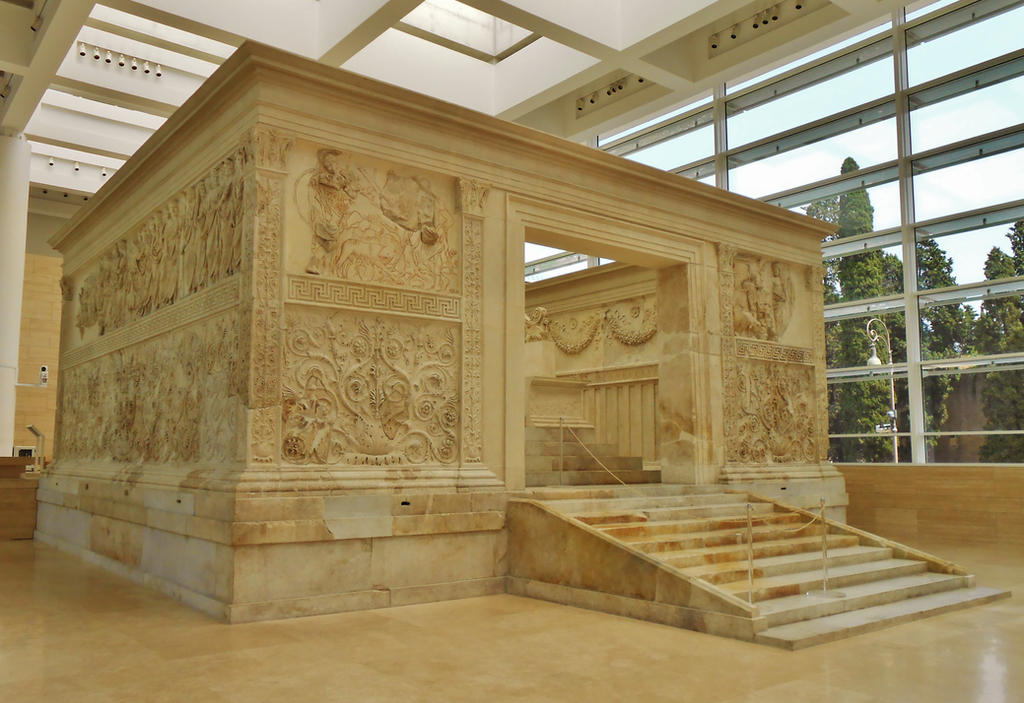
Ara Pacis Augustae GeohistoriaArte
An unusually muted form of triumphal Roman architecture, but one of the greatest examples of early Roman sculpture, the Ara Pacis Augustae (Latin for "Altar of Augustan Peace") consists of a stone table of sacrifice within a walled precinct, whose walls are pierced by entrances on the east and west.

The Ara Pacis Augustae (Altar of Augustan Peace)
The Ara Pacis Augustae is a complex masterpiece, with elaborate reliefs including more than a hundred figures and voluminous vegetation filled with the details of nature. It is also a much damaged and reconstructed monument, making it important to distinguish original marble portions from later hypothical reconstructions and more recent changes.
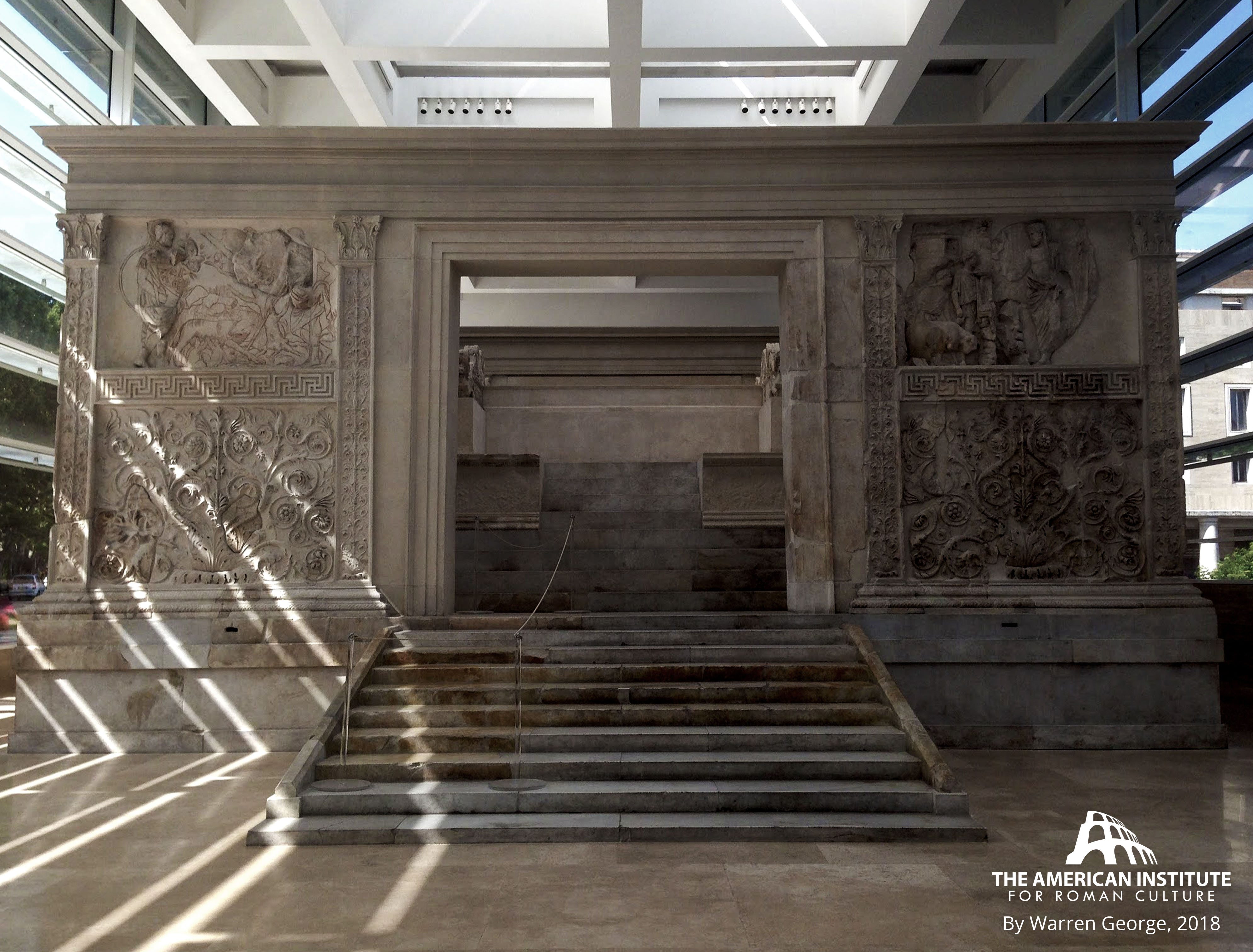
Ancient Rome Live Monuments of Rome Ara Pacis Augustae
The Ara Pacis Augustae, or Altar of Augustan Peace, is an ancient Roman altar erected by the Roman Senate to celebrate Augustus's victorious return from Spain and Gaul. It was constructed between 13 and 9 BC, during a period of political stability and cultural rebirth in Rome known as the Pax Romana.

ANCIENT ART — Ara Pacis Augustae (“Altar of Augustan Peace”),...
The Ara Pacis Augustae and the Imagery of Abundance in Later Greek and Early Imperial Roman Art. Princeton, N.J. : Princeton University Press. Ceen , Allan , ed. 1984 .

Ara Pacis Augustae, capolavoro dell'arte classica e simbolo di pace • Uozzart
The Ara Pacis is, at its simplest, an open-air altar for blood sacrifice associated with the Roman state religion. The ritual slaughtering and offering of animals in Roman religion was routine, and such rites usually took place outdoors.
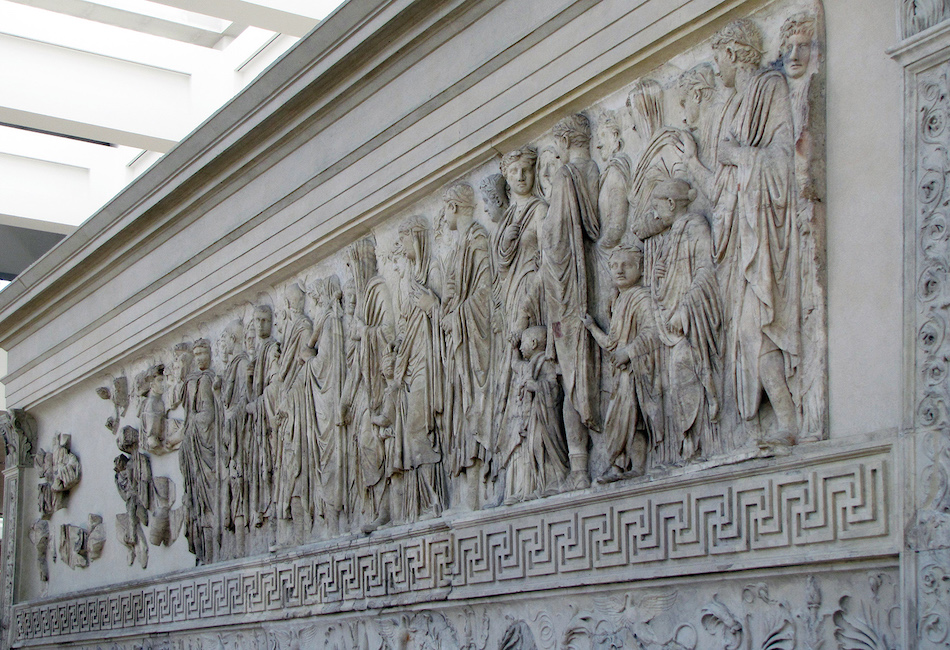
The Ara Pacis Augustae (Altar of Augustan Peace)
World History Encyclopedia. Retrieved from https://www.worldhistory.org/video/195/ara-pacis-augustae-altar-of-augustan-peace-13-9-bc/ Chicago Style Academy, Smarthistory, Art History at Khan. " Ara Pacis Augustae (Altar of Augustan Peace), 13-9 B.C.E. (Rome) ." World History Encyclopedia.
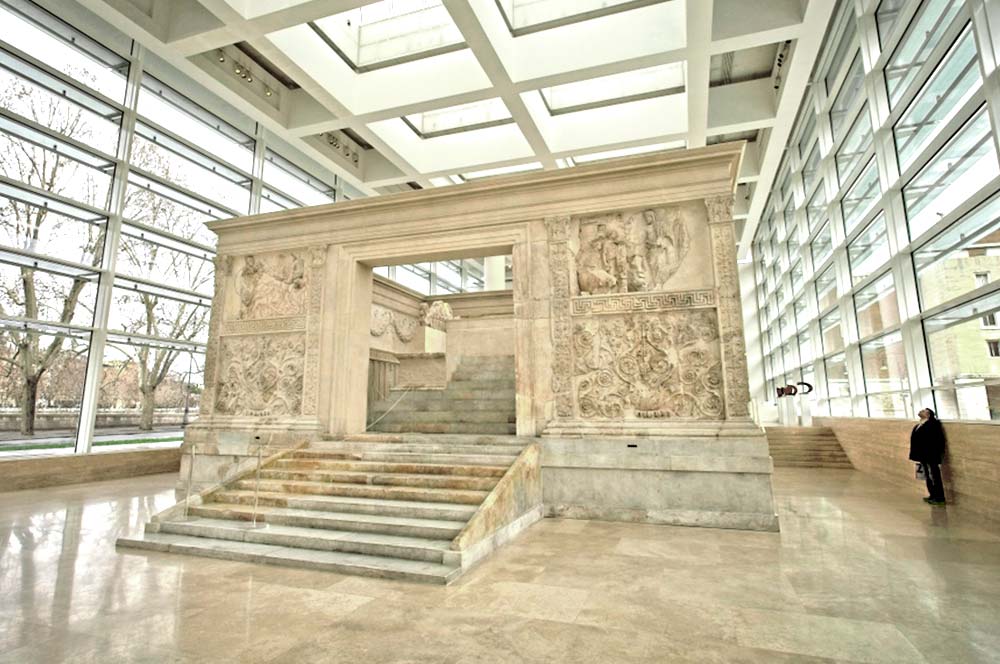
Ara Pacis Augustea The Altar of Peace ArcheoRoma
Ara Pacis, shrine consisting of a marble altar in a walled enclosure erected in Rome's Campus Martius (Field of Mars) in honour of the emperor Augustus and dedicated on Jan. 30, 9 bce. The dedication was recorded in Ovid's Fasti as well as by Augustus himself in his "Res Gestae Divi Augusti"
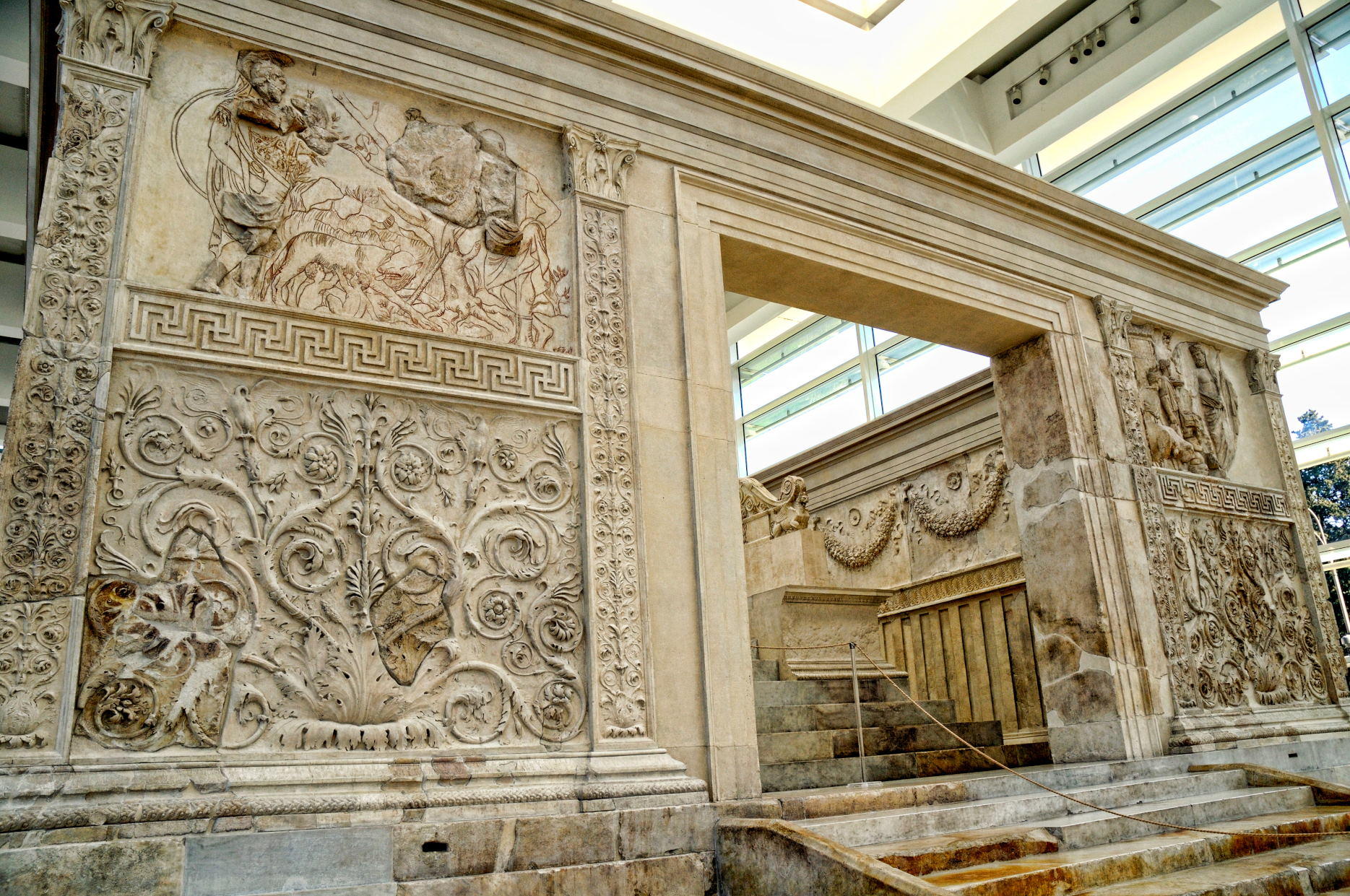
Ara Pacis Colosseum Rome Tickets
The Ara Pacis Augustae ( Latin, "Altar of Augustan Peace"; commonly shortened to Ara Pacis) is an altar in Rome dedicated to the Pax Romana. [1] The monument was commissioned by the Roman Senate on July 4, 13 BC to honour the return of Augustus to Rome after three years in Hispania and Gaul [2] [3] and consecrated on January 30, 9 BC. [4]

The Ara Pacis Augustae (Altar of Augustan Peace) Brewminate A Bold Blend of News and Ideas
Ara Pacis (Augustae), (Latin: "Augustan Altar of Peace") State monument built by Caesar Augustus in Rome's Campus Martius (13-9 bc) to commemorate his victorious return from Spain and Gaul. It consists of an altar on a podium enclosed by walls.
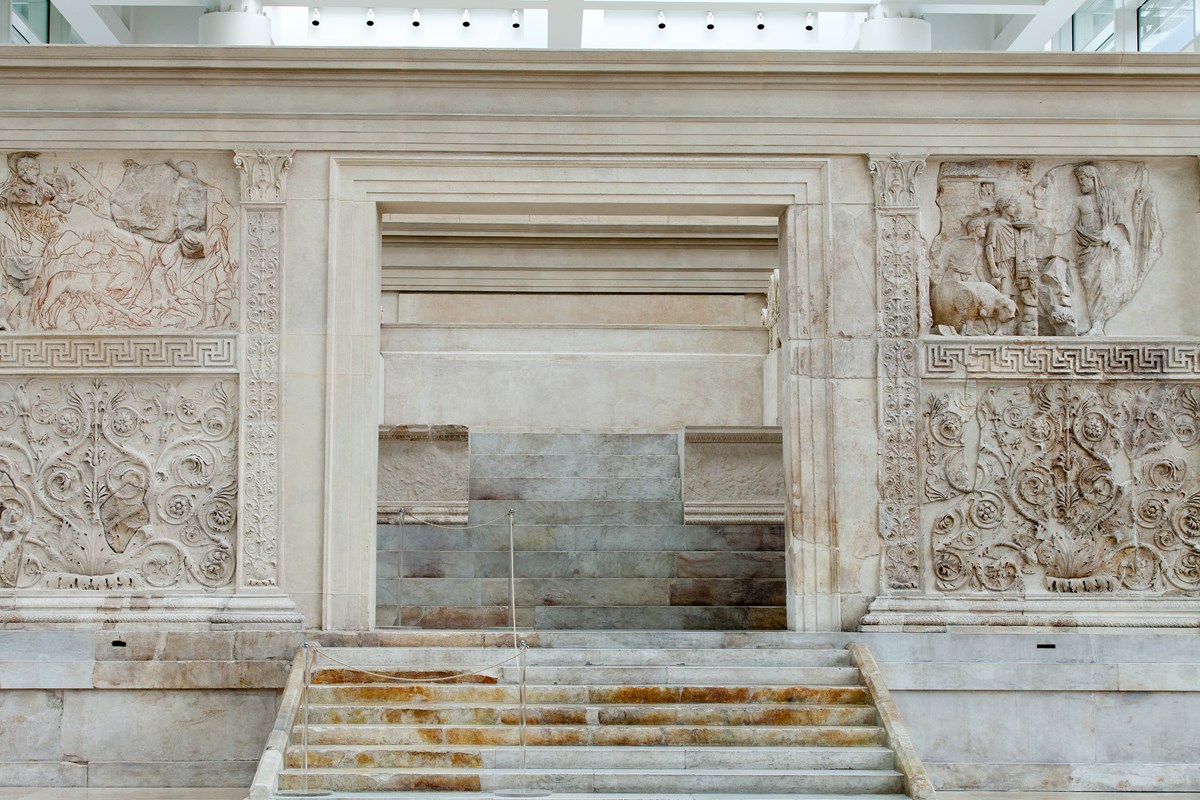
Ara Pacis Augustae, a Roman Altar to Peace
The Ara Pacis Augustae or Altar of the Augustan Peace in Rome. Built to celebrate the return of Augustus to Rome in 13 BCE following campaigns in Spain and Gaul, it is a masterpiece of Roman sculpture and, in particular, portraiture.
ROMA, CAPUT MUNDI ARA PACIS AUGUSTAE
The Ara Pacis was commissioned by Emperor Augustus to celebrate the victories in the military campaigns of Spain and Gaul. The altar, begun in 13 BC, was solemnly inaugurated on January 30, 9 BC, on the birthday of his wife Livia Drusilla. Originally the altar had to be entirely painted and completed with gold leaf.

Ara Pacis, Roma, guida completa orari, biglietti, storia, cosa sapere.
Pont du Gard Obelisks and ancient Rome Lateran Obelisk Preparations for a Sacrifice The Domus Aurea, Nero's Golden Palace The rediscovery and impact of the Domus Aurea Portrait of Vespasian Colosseum (Flavian Amphitheater) Colosseum The Arch of Titus Relief from the Arch of Titus, showing The Spoils of Jerusalem being brought into Rome
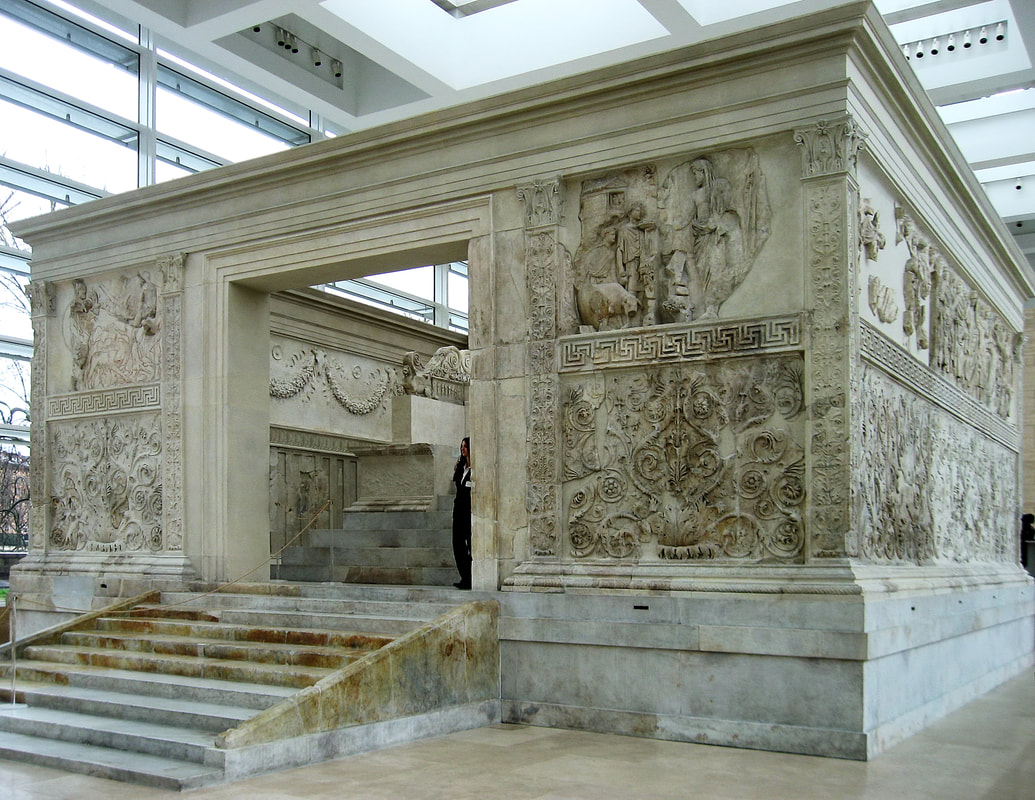
HOCW62 Ara Pacis Augustae ("Altar of Augustan Peace"). Rome, Italy. 139 BCE. EMILY HAUSER
The Ara Pacis (Latin, " Altar of Peace ") is an altar in Rome dedicated to peace. The personification of peace is depicted as the Roman goddess Pax. The Ara Pacis was dedicated on January 30 in 9 BC, the birthday of Augustus his wife Livia. It is also referred to as the Ara Pacis Augustae (" Altar of Augustan Peace ") because it prompted the.

Ara Pacis Augustae, the "Altar of Augustan Peace", as reassembled Altar, Pax, Colosseum Rome
The Ara Pacis Augustae (Altar of the Augustan Peace), commonly known as the Ara Pacis, is not only a beautiful work of art commemorating a peaceful era, but it also functioned as a propaganda piece for Augustus and his regime.

Ara Pacis Augustae. Built in 1st century BC to celebrate the return of Augustus from his
Sculpted monuments, such as the Ara Pacis Augustae built between 13 and 9 B.C., testify to the high artistic achievements of imperial sculptors under Augustus and a keen awareness of the potency of political symbolism. Religious cults were revived, temples rebuilt, and a number of public ceremonies and customs reinstated.
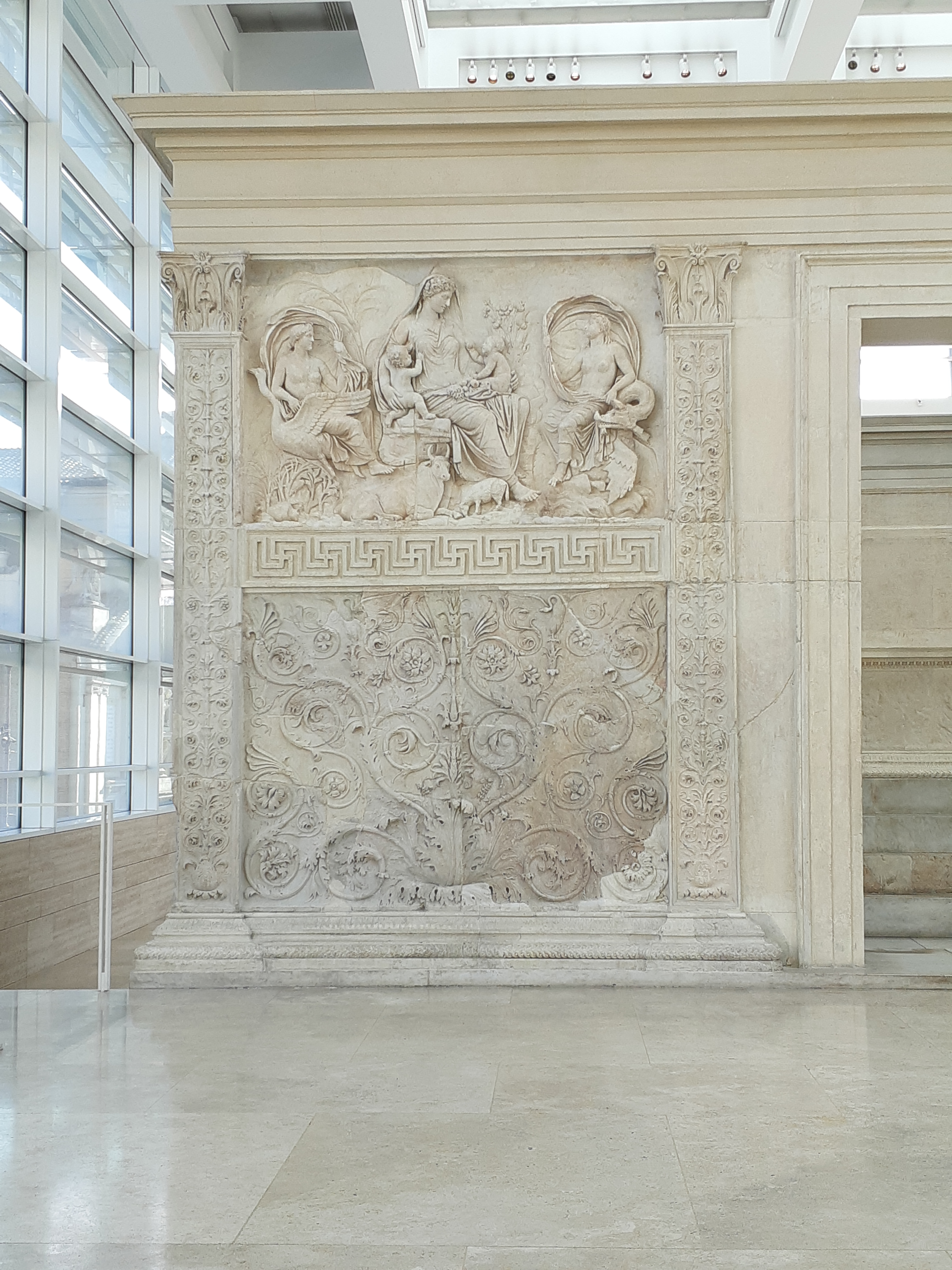
Ara Pacis Augustae (Altar of Augustan Peace) Seuso
The Ara Pacis Augustae or Altar of Peace was built to celebrate the return of Augustus from his campaigns in Spain and Gaul. The marble structure is a masterpiece of Roman sculpture. Built in: 9 a.C. Built by: Senato Romano Location: Lungotevere in Augusta The Ara Pacis is an exciting example of Roman sculpture in the early times.